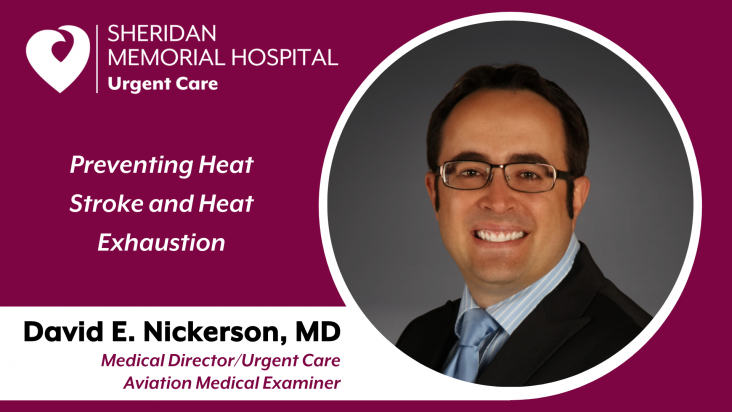Summer weather calls many of us to spend more time outdoors. While this time of year brings a welcome respite from our cold Wyoming winters, it also brings higher temperatures and risk for heat-related illnesses and heat stroke. As the body’s temperature rises and gets too hot, some of the first symptoms that occur are excessive sweating, cool clammy skin, nausea and vomiting and muscle cramps. This is known as heat exhaustion, and can occur with or without heat cramps or heat syncope (passing out).
However, if your body’s temperature continues to rise to 104 degrees Fahrenheit or higher, you can progress to heat stroke. Symptoms of heat stroke include balance difficulties, hallucinations, confusion, passing out, seizures and other complications involving the central nervous system. Heat stroke can cause permanent brain damage and is life-threatening.
There are several myths regarding heat stroke that should be dispelled. A common misconception is that you stop sweating when heat stroke occurs. In reality, heat stroke often occurs during extended exertion in the heat, so people are almost always still sweaty as they enter the territory of heat stroke.
Another myth is that you must be severely dehydrated to develop heat stroke. Dehydration may predispose you to heat illness, and can make it worse, but does not have to be present. Heat stroke can occur after only 20 minutes of exertion and before you have lost much fluid. The intensity of exertion and temperature are the main contributors.
Keep in mind that things are not always as they appear. For instance, the most common ways to take your temperature are with an oral or forehead thermometer. However, your body’s external temperature does not always match its core temperature. In addition, people who are developing heat stroke may not appear dizzy, confused, or off balance initially while they are in the early stages of heat stroke and may then deteriorate rapidly as their body temperature rises further.
Certain factors can put you at higher risk of developing heat stroke. These include high environmental temperature, intense exertion, being out of shape, equipment preventing heat loss (football pads, firefighter PPE, and multiple layers of clothes), obesity, sleep deprivation, dehydration, and fever.
Heat stroke is a risk for any age group. For example, infants do not have the ability to change their environment or clothing on their own. Children left in hot vehicles are at particular risk. High school football players are also at risk from intense exercise, sometimes twice a day at the beginning of the season in August. Working adults such as roofers and firefighters should be aware as they exert themselves in hot environments. Finally, seniors are also predisposed to heat related illness, particularly if they do not have air conditioning, their air conditioning fails, or there is a power outage.
There are several steps that you can take to prevent heat exhaustion and heat stroke. Be mindful of the weather forecast and be willing to adjust your plans for the day. If it is going to be hot, don’t make big plans for exertion and plan to take frequent breaks. Plan any exercise, hikes, or outdoor work earlier in the day, when it is not as hot.
Avoid dehydration by drinking plenty of fluids such as water or sports drinks and avoid caffeine and alcohol. Keep in mind that diarrhea, vomiting, and fever all increase your water loss and can also predispose you to dehydration and heat-related illnesses. An easy way to track your hydration level is to monitor your urine color. The darker the urine, the more dehydrated you are. Hydrate to the point that your urine is pale yellow or clear.
Also keep in mind that our vehicles are a particular risk for exposure to high temperatures. A car in the sun can heat up by 20 degrees in only 10 minutes. A study measuring temperatures in cars parked in the sun on a 95 degree found the average temperature reached to be 116 degrees. Consider running your vehicle’s air conditioning for 10 minutes before entering and never leave a vulnerable adult or child in a hot vehicle.
If you plan to be outside in the heat, wear loose lightweight clothes and avoid wearing multiple layers that would keep your body from cooling properly. If you feel that you are getting too hot, remove extra clothing and move to the shade or air conditioning if possible. Taking a cool shower or bath can also be very effective. If this is not possible, getting wet and sitting in front of a fan can cool you through evaporation. Cold packs (or anything else cold such as a bottle of water from the refrigerator) can be placed on your neck and in your armpits and groin to cool you further.
However, if you or someone else continue to worsen despite these measures or begin to experience balance difficulties, confusion, hallucinations, passing out, or seizures seek medical attention immediately, even if you have to call 911. Enjoy the summer weather, but do so safely.

